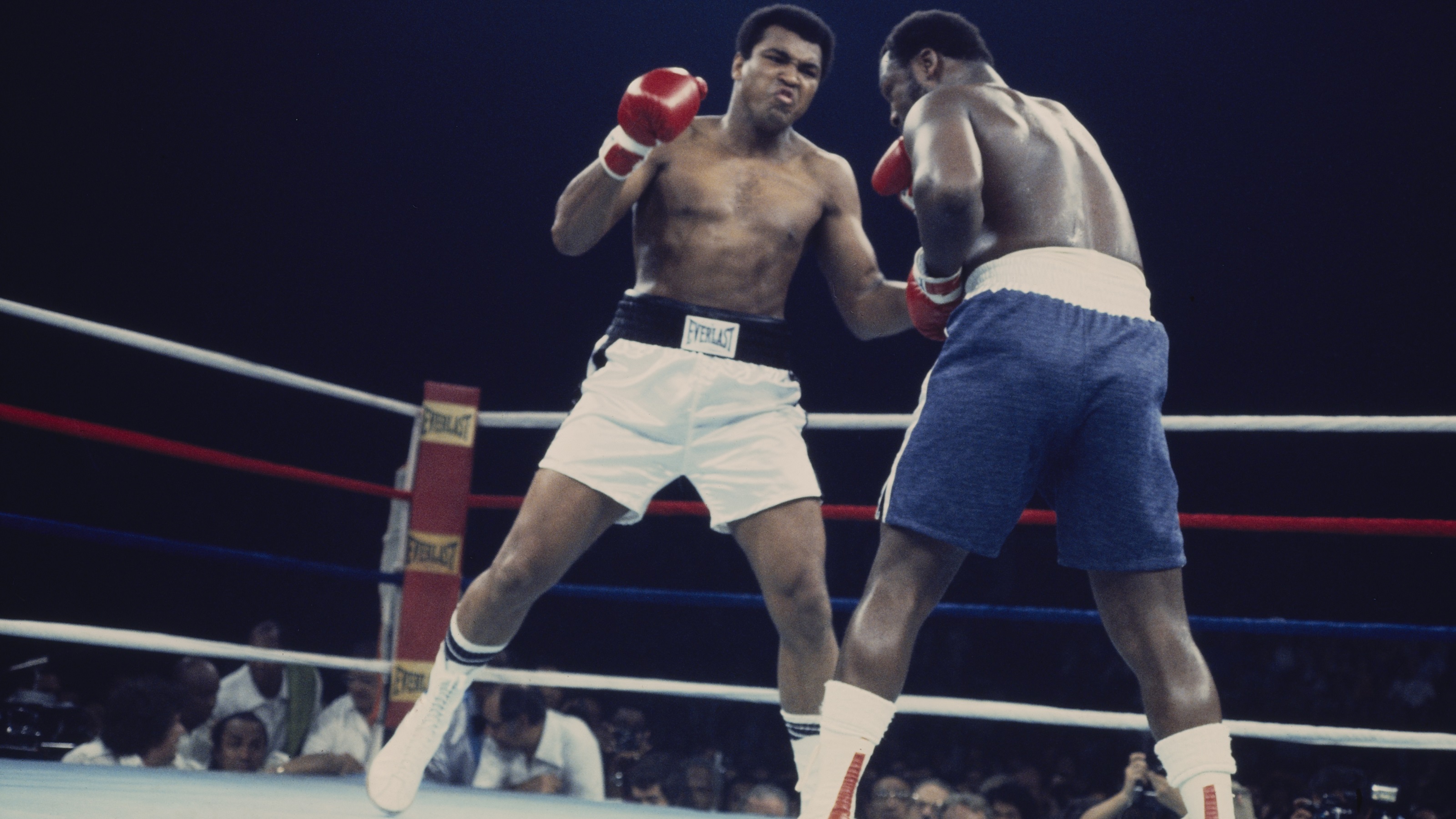Sports Memorabilia Appear to Have Arrived as Investing Class
The world's most prestigious auction house recently had a Sports Week in which it auctioned off sports collectibles.


Sotheby’s, the legendary auction house, wrapped up Sports Week in April, its first dedicated foray into sports memorabilia. The piece de resistance of the auction: a signed pair of boxing trunks that Muhammed Ali wore during his “Thrilla in Manila” bout against Joe Frazier.
The fact that Sotheby’s, an auction house whose past sales include a $157.2 million Modigliani and a $139.4 million Picasso, has stepped into the ring with sports memorabilia is a clear declaration: Sports collectibles have made it to the big leagues in investing.
While sports memorabilia has, for the last several decades, generated some major sales and notable headlines, it has largely been viewed as the interest and concern of only a passionate few.
From just $107.88 $24.99 for Kiplinger Personal Finance
Become a smarter, better informed investor. Subscribe from just $107.88 $24.99, plus get up to 4 Special Issues

Sign up for Kiplinger’s Free Newsletters
Profit and prosper with the best of expert advice on investing, taxes, retirement, personal finance and more - straight to your e-mail.
Profit and prosper with the best of expert advice - straight to your e-mail.
We know that sports fanatics might be willing to spend hundreds of thousands of dollars on a baseball card or Ali’s sweaty white trunks, but would — should? — anyone else be willing to invest?
The answer from Sotheby’s is clear: Yes. (And for major dollar amounts, too.)
While Sotheby’s has traded in some historic sports memorabilia before — its $10 million auction of Michael Jordan’s famed Last Dance game-worn jersey set a record in 2022 — Sports Week is an escalation of that trend.
A growing market
Since the pandemic, demand for sports collectibles has reached new heights, and valuation in the market is expected to have a CAGR of 21.8% over the next decade. Collectors who have held on to memorabilia are now seeing massive returns.
For example, a pair of Jordan’s sneakers worn in his “flu game” during the 1997 NBA finals first went up for auction in 2013, where they sold for a record $104,765 — the most ever paid for a pair of game-worn shoes. But when they came up again in 2023, the shoes sold for $1.38 million. By then, even that was not a record.
It appears we’re witnessing the emergence of a new blue-chip investment class. For the discerning investor, sports memorabilia may be part of a new investment strategy.
Part of it is straightforward logic: The return on sports memorabilia has outpaced the S&P 500 in recent years. If you’re an investor and would like to allocate a portion of your investment money, even a few thousand dollars, investing in a baseball card or other collectibles could be part of a sound allocation strategy.
In recent years, I’ve talked to more than one high-net-worth individual who has chosen to move into sports memorabilia; they’ve never owned a single collectible before, but now have acquired several multimillion-dollar trading cards.
For them, it’s not their passion. It’s an investment opportunity that has shown incredible returns.
Jumping into the collectibles pool
As these wealthy individuals have seen the success that more humble, passion-based collectors have had with certain items, they’ve jumped into the pool, driving up demand and fueling some of these sky-high valuations.
This isn’t a bubble. Sotheby’s wouldn’t be engaging in sports memorabilia at this scale if there wasn’t significant, deep-pocketed demand from its customer base. And the market has been growing for decades.
Back in 1991, hockey great Wayne Gretzky and a business partner bought a premier T206 Honus Wagner card. The near-mint-condition card was sold to Gretzky for just over $450,000. At the time, many people — myself included — thought Gretzky was crazy for spending that much money on a baseball card.
But when it sold again in 2007 — even after an FBI investigation over fraud concerns about the card’s condition — it went for a cool $2.8 million.
Sports collectibles are appreciating like fine art in the modern market. Collectors who purchase and hold on to their piece for multiple years can expect a steady return.
Who you collect is critical
Also like art, who you buy matters.
There’s a difference between purchasing a Van Gogh and some up-and-coming artist — maybe they make it big, maybe they don’t. Similarly, with sports collectibles, items owned by GOATs (greatest of all time) are going to be premium investments. Memorabilia linked to Jordan, Babe Ruth and Ali all have proven demand, even compared to other legends like LeBron James or George Foreman. It’s not that a Larry Bird-worn jersey won’t appreciate, but it’s less likely to fetch the multiple-million-dollar hype that a Jordan jersey will. And Ruth’s jersey, hitting the auction block in August, is expected to fetch $30 million.
Obviously, none of this implies that sports collectibles are some sort of infallible asset class, or without a material degree of risk.
Like all collectibles, sports memorabilia is not going to be a liquid asset. In order to maximize investment, cashing out will require multiple months and working with an auction house. The value of the asset is also subject to the whims of the broader macroeconomic environment, meaning that in times of downturn, demand can evaporate.
There’s another unique risk, too, with sports collectibles: Because the market is growing so dramatically, valuations for certain items can at times be wildly off, making insuring the item more complicated. A pair of Ali ring-worn trunks purchased 10 years ago for $400,000 may actually be worth $4 million at auction today, but if no similar Ali trunks have changed hands in a decade, it’s impossible to say for certain.
As major auction houses turn their attention to sports memorabilia, the moment for collectors appears to have arrived. For the right investors, it may be a new blue-chip opportunity.
Related Content
- Provenance Plays a Vital Role in Car Collecting
- Collectibles Prove to Be a Solid Asset Class for Investors
- Collectible Vintage Photos Emerge as Investable Asset Class
- How to Help Your Kids Profit From Their Collectibles
- You Can Now Invest in Hot Private Tech Companies: Should You?
Profit and prosper with the best of Kiplinger's advice on investing, taxes, retirement, personal finance and much more. Delivered daily. Enter your email in the box and click Sign Me Up.

Tom Ruggie, ChFC®, CFP®, founded Destiny Family Office, a Destiny Wealth Partners firm, to help clients manage the increasing complexities inherent in their business and personal lives. He has identified three key areas where his firm can make a significant difference: presenting a compelling sphere of investments, including alternative, direct and co-investment opportunities; creating a special emphasis on high-end collectors whose collections signify significant alternative investments; and strengthening the firm’s private trust capabilities. Ruggie has become one of the most respected financial advisers in the industry, receiving national recognition and rankings including: 7x Forbes Best-in-State Wealth Advisors (including 2024; #1 N Florida), InvestmentNews Awards RIA Team of the Year (2024), Forbes Top 250 RIA Firms (2023), Forbes Finance Council since 2016, 12x Barron’s Top 1200 Financial Advisors (including 2024), InvestmentNews Top 75 Fastest-Growing Fee-Only RIAs (2023), 12x Financial Advisor Magazine America’s Top RIAs (including 2024), 3x Family Wealth Report Awards Finalist (2024), USA Today Best Financial Advisory Firms (2023).
-
 Why Public Markets Don't Look Like They Used To
Why Public Markets Don't Look Like They Used To -
 Turning 65 in 2026? Here Is Exactly How to Sign Up for Medicare
Turning 65 in 2026? Here Is Exactly How to Sign Up for MedicareWhether you’re months away from your 65th birthday or plan to work past retirement age, here are the steps to secure your Medicare coverage and avoid costly mistakes.
-
 A Free Tax Filing Option Has Disappeared for 2026: Here's What That Means for You
A Free Tax Filing Option Has Disappeared for 2026: Here's What That Means for YouTax Filing Tax season officially opens on January 26. But you'll have one less way to submit your tax return for free. Here's what you need to know.
-
 Is a Caregiving Strategy — for Yourself and Others — Missing From Your Retirement Plan?
Is a Caregiving Strategy — for Yourself and Others — Missing From Your Retirement Plan?Millions of people over 65 care for grandkids, adult kids or aging parents and will also need care themselves. Building a caregiving strategy is crucial.
-
 6 Financially Savvy Power Moves for Women in 2026 (Prepare to Be in Charge!)
6 Financially Savvy Power Moves for Women in 2026 (Prepare to Be in Charge!)Don't let the day-to-day get in the way of long-term financial planning. Here's how to get organized — including a reminder to dream big about your future.
-
 Private Equity Is Fundamentally Changing: What Now for Investors and Business Owners?
Private Equity Is Fundamentally Changing: What Now for Investors and Business Owners?For 40 years, private equity enjoyed extraordinary returns thanks to falling rates and abundant credit. That's changed. What should PE firms and clients do now?
-
 I'm a Real Estate Expert: 2026 Marks a Seismic Shift in Tax Rules, and Investors Could Reap Millions in Rewards
I'm a Real Estate Expert: 2026 Marks a Seismic Shift in Tax Rules, and Investors Could Reap Millions in RewardsThree major tax strategies will align in 2026, creating unique opportunities for real estate investors to significantly grow their wealth. Here's how it works.
-
 When Can Tax Planning Be an Act of Love? This Family Found Out
When Can Tax Planning Be an Act of Love? This Family Found OutHow can you give stock worth millions to a loved one without giving them a huge capital gains tax bill? This family's financial adviser provided the answer.
-
 Forget Job Interviews: Employers Will Find the Best Person for the Job in an Escape Room (This Former CEO Explains Why)
Forget Job Interviews: Employers Will Find the Best Person for the Job in an Escape Room (This Former CEO Explains Why)Escape rooms can give employers a better indication of job candidates' strengths than a standard interview. Here's how your company can get on board.
-
 The Paradox Between Money and Wealth: How Do You Find the Balance?
The Paradox Between Money and Wealth: How Do You Find the Balance?Wealth reflects a life organized around relationships, health, contribution and time — qualities that compound differently than money in a mutual fund.
-
 Billed 12 Hours for a Few Seconds of Work: How AI Is Helping Law Firms Overcharge Clients
Billed 12 Hours for a Few Seconds of Work: How AI Is Helping Law Firms Overcharge ClientsThe ability of AI to reduce the time required for certain legal tasks is exposing the legal profession's reliance on the billable hour.